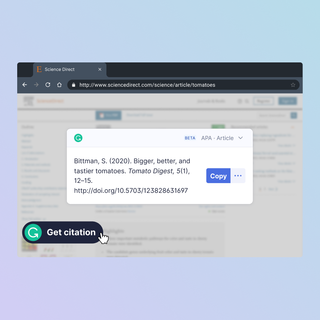Grammarly is a popular writing tool that checks for spelling and grammar errors and offers additional advice to improve writing.
As a professional writer, I find it serves as a helpful “second pair of eyes,” frequently catching wrong or poor word choices and awkward phrasings in my work. I also recommend it for my writing students because I think it can help them improve their writing – though as with any tech-based writing assistant, it’s not perfect and will miss mistakes, or on rare occasions, provide recommendations that I don’t agree with from a stylistic perspective.
Grammarly has a robust free version available as well as education-specific plans, and it recently expanded its capabilities to start offering automated citations, which is very welcome news to students working on research papers this year.
Here’s everything you need to know about Grammarly.
What is Grammarly?
Grammarly is a cloud-based AI-powered writing assistant. It checks for spelling, grammar, and punctuation errors, as well as writing clarity and delivery mistakes. Users can also customize their Grammarly tool to account for their desired style and tone.
Grammarly is available to download for desktops, as a browser extension, and a keyboard plugin. It is available as an MS Office Plug-in and a Google Docs browser extension, and as an ios app for iPhones and iPads.
Grammarly was founded in 2009 in Ukraine by Max Lytvyn, Alex Shevchenko, and Dmytro Lider, and though much of its operations are now based in North America, it has maintained an office in Kyiv and has donated millions to the ongoing Ukrainian defense.
What Are Grammarly’s Best Features?
I have found Grammarly to be better at catching homophones than other spell-checkers. For instance, Grammarly almost always finds there/their or are/our typos.
Grammarly can help remind students to write in an active voice, and offers quick but helpful explanations of the changes it has made. Additionally, Grammarly’s Google plug-in automatically checks everything you write, helping eliminate potentially embarrassing typos or mistakes in emails, on web forms, etc.
Recent upgrades to Grammarly are geared toward students. The paid version of the tool, now checks for common citation formatting errors, instantly proofreading the formatting of in-line and bibliography citations and highlighting incorrect use of commas, parentheses, and ampersands.
All Grammarly users now have the option to use an automatic citation creation tool, which allows students to create a one-click citation from tens of millions of articles.

How Much Does Grammarly Cost?
Grammarly offers a free version with most of the capabilities mentioned here, plus paid versions with additional features, including more advanced sentence rewrite suggestions and plagiarism detection.
Individual premium plans cost $12 per month with the purchase of a year’s subscription.
Group education licenses are also available and include access to an analytics dashboard. The price for these licenses varies, but for example, access for ten people costs $145 per month while access for 50 students costs $625 per month.
Grammarly Tips & Tricks
Have Students Log Words They Commonly Get Wrong
Grammarly can be a great tool to help encourage students to look critically at their work. Ask them to write a list of all the words Grammarly highlighted in the initial draft of their paper, which can help raise awareness of their common mistakes with words and phrases.
Remind Students That It’s Okay to Disagree with Grammarly
Tools such as Grammarly have been criticized for pushing conformity in writing. I like to discuss style and unique voice with my students and encourage them to “know the rules, so they can learn when they intentionally want to break them.” Encouraging students to discuss why they ignored certain Grammarly advice can be a good teachable moment.
Utilize Grammarly’s Explanations
Grammarly’s blog is loaded with great writing resources and explanations about grammar. The simple-to-follow conversational tone can be more enjoyable for students to read and easier for them to understand than an explanation you might find in a textbook. I’ll frequently assign these short blog posts and will also recommend specific posts to specific writers when I’m reading their work. For instance, if a student is struggling with comma usage, I might put this link in a comment on their work.
- How to Write in Plain Language for Teaching
- What is NaNoWriMo and How Can It Be Used to Teach Writing?
- What is ReadWriteThink and How Can It Be Used for Teaching? Tips and Tricks
Correction: 9/20/22
The original version of this story incorrectly implied that Grammarly Editor was only available in paid versions of the tool.

